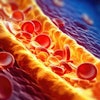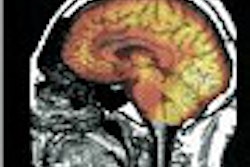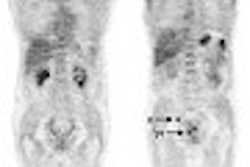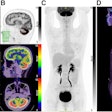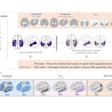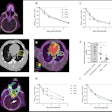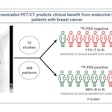American College of Radiology, Philadelphia, 2003
$350 for ACR members; $600 for non-members; $199 for members-in-training
PET Imaging for the Radiologist is based on a lecture series presented at the 2002 ACR annual meeting in Miami. The format consists of slide presentations set to audio tracks. Overall, this is an impressive CD set. The lectures are excellent, with little overlap or repetition. The images are high quality.
The first disk begins with a comprehensive review of PET physics, including image formation and the limits of spatial resolution. There also is a comparison of PET with coincidence imaging on rotating and hybrid gamma cameras. Next is an overview of clinical applications of PET, including the current FDA approved radiopharmaceuticals, oncologic and nononcologic Medicare coverage, coding, and what indications there may be for PET in the future. The economics of PET focuses on startup costs and what volume a practice needs to maintain to stay out of debt.
The second disk focuses on oncologic PET imaging. The two lectures by Dr. Macapinlac are excellent. In his lung cancer lecture, he reviews PET fundamentals, such as patient preparation and the normal distribution of 18FDG activity. Macapinlac provides an ample number of abnormal scans to demonstrate key concepts, as well as pointing out common imaging pitfalls, particularly those related to therapy. He also discusses the limitations of PET in the detection of certain malignancies.
A lecture by Dr. Barry Siegel highlights the emerging role of PET in women’s imaging, with an emphasis on breast cancer, including the indications and the limitations of PET as well as Medicare coverage.
Lectures on the third disk center on PET for the evaluation of cardiac and neurological disorders. The cardiac portion focuses primarily on the evaluation of myocardial perfusion and viability. Specific agents for cardiac work are reviewed, such as a comparison of 18FGD-PET to 201Th SPECT.
The evaluation of neurological disorders touched on the role of PET in the detection and characterization of dementia, and localization of refractory seizure foci. Evaluation of brain tumor recurrence versus necrosis after therapy is also discussed.
The third disk includes a test, which is a mixture of 45 multiple choice and true/false questions, in Adobe Acrobat format, that can be printed out for CME credit. No test taking on the computer or automated scoring is available.
Although the slide show format is adequate, this is no more innovative than conventional videos. I would have preferred that the software be a bit more interactive. Some points could have been better emphasized by the use of animation.
The lack of interactivity may be a problem for someone who finds it difficult to stay focused during a long series of lectures. The 45 review questions are well written, but the answer key does not provide any detailed explanation. Several teaching cases could have been added -- this is a 3-CD volume, yet only a fraction of the available storage space is utilized.
PET Imaging for the Radiologist is best suited for the practicing radiologist who may be considering offering PET services. The price is steep for a resident, and given the lack of teaching cases, it may be of lesser value.
Completed questions can be submitted for up to 7.5 hours of Category 1 CME credit. The minimum requirements to run the software is a PC with Windows 98, a Pentium III 450Mhz, a sound card, 128 MB RAM, and a 24x CD-ROM. The software is currently only available for the PC. For a demo, click here.
By Dr. Jonathan J. SudberryAuntMinnie.com contributing writer
June 4, 2003
Dr. Sudberry is a radiology resident at the University of Minnesota in Minneapolis. He will serve as chief resident for 2003-2004.
If you are interested in reviewing a book, let us know at residents@auntminnie.com.
The opinions expressed in this review are those of the author, and do not necessarily reflect the views of AuntMinnie.com.
Copyright © 2003 AuntMinnie.com



